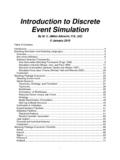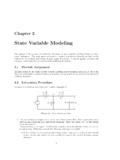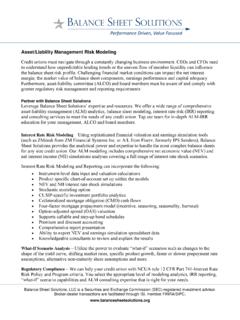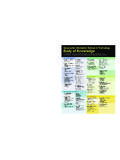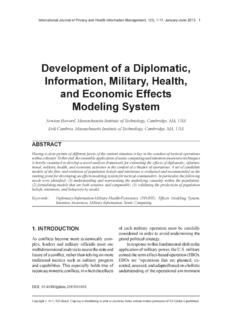Transcription of Manufacturing Systems Modeling and Analysis
1 Manufacturing Systems Modeling and AnalysisSecond EditionGuy L. Curry Richard M. FeldmanManufacturing SystemsModeling and AnalysisSecond Edition123 Prof. Guy L. CurryTexas A & M UniversityDept. Industrial & SystemsEngineeringTAMU 313177843-3131 College StationTexas241, M. FeldmanTexas A & M UniversityDept. Industrial & SystemsEngineeringTAMU 313177843-3131 College StationTexas241, 978-3-642-16617-4e-ISBN 978-3-642-16618-1 DOI Heidelberg Dordrecht London New Yorkc Springer-Verlag Berlin Heidelberg 2009, 2011 This work is subject to copyright. All rights are reserved, whether the whole or part of the material isconcerned, specifically the rights of translation, reprinting, reuse of illustrations, recitation, broadcasting,reproduction on microfilm or in any other way, and storage in data banks. Duplication of this publicationor parts thereof is permitted only under the provisions of the German Copyright Law of September 9,1965, in its current version, and permission for use must always be obtained from Springer.
2 Violationsare liable to prosecution under the German Copyright use of general descriptive names, registered names, trademarks, etc. in this publication does notimply, even in the absence of a specific statement, that such names are exempt from the relevant protectivelaws and regulations and therefore free for general design: eStudio Calamar on acid-free paperSpringer is part of Springer Science+Business Media ( )Library of Congress Control Number: 2010938859 This book is dedicated to the two individualswho keep us going, tolerate our work ethic,and make life a wondrous journey, our wives:Jerrie Curry and Alice textbook was developed to fill the need for an accessible but comprehensivepresentation of the analytical approaches for Modeling and analyzing models ofmanufacturing and production Systems . It is an out growth of the efforts withinthe Industrial and Systems Engineering Department at Texas A&M to develop andteach an analytically based undergraduate course on probabilistic Modeling of man-ufacturing type Systems .
3 The level of this textbook is directed at undergraduate andmasters students in engineering and mathematical sciences. The only prerequisitefor students using this textbook is a previous course covering calculus-based prob-ability and statistics. The underlying methodology is queueing theory, and we shalldevelop the basic concepts in queueing theory in sufficient detail that the readerneed not have previously covered it. Queueing theory is a well-established disci-pline dating back to the early 1900 s work of A. K. Erlang, a Danish mathematician,on telephone traffic congestion. Although there are many textbooks on queueingtheory, these texts are generally oriented to the methodological development of thefield and exact results and not to the practical application of using approximationsin realistic Modeling situations. The application of queueing theory to manufactur-ing type Systems started with the approximation based work of Ward Whitt in the1980 s. His paper on QNA (a queueing network analyzer) in 1983 is the base fromwhich most applied Modeling efforts have are several textbooks with titles similar to this book.
4 Principle amongthese are: Modeling and Analysis of Manufacturing Systems by Askin and Stan-dridge, Manufacturing Systems Engineering by Stanley Gershwin, Queueing The-ory in Manufacturing Systems Analysis and Design by Papadopoulos, Heaveyand Browne, Performance Analysis of Manufacturing Systems by Tayfur Altiok,Stochastic Modeling and Analysis of Manufacturing Systems , edited by David Yao,and Stochastic Models of Manufacturing Systems by Buzacott and of these texts, along with several others contributes greatly to the field. Thebook that most closely aligns with the motivation, level, and intent of this bookis Factory Physics by Hopp and Spearman. Their approach and Analysis is highlyrecommended reading, however, their book s scope is on the larger field of produc-viiviiiPrefacetion and operations management. Thus, it does not provide the depth and breath ofanalytical Modeling procedures that are presented in this text is about the development of analytical approximation models and theiruse in evaluating factory performance.
5 The tools needed for the analytical approachare fully developed. One useful non- analytical tool that is not fully developed inthis textbook is simulation Modeling . In practice as well as in the development ofthe models in this text, simulation is extensively used as a verification tool. Eventhough the development of simulation models is only modestly addressed, we wouldencourage instructors who use this book in their curriculum after a simulation courseto ask students to simulate some of the homework problems so that a comparisoncan be made of the Analysis using the models presented here with simulation mod-els. By developing simulation models students will have a better understanding ofthe Modeling assumptions and the accuracy of the analytical approximations. In ad-dition several chapters include an appendix that contains instructions in the use ofMicrosoft Excel as an aid in Modeling or in building simple simulation this second edition, suggestions from various instructors who have used thetextbook have been incorporated.
6 Because of the importance of simulation model-ing, this second edition also includes an introduction to event-driven special sections are included to help the reader organize the many conceptscontained in the text. Immediately after the Table of Contents, we have included asymbol table that contains most of the notation used throughout the text. Second,immediately after the final chapter a glossary of terms is included that summarizesthe various definitions used. It is expected that these will prove valuable resourcesas the reader progresses through the individuals have contributed to this book through our interactions in re-search efforts and discussions. Special thanks go to Professor Martin A. Wortman,Texas A&M University, who designed and taught the first presentation of the coursefor which this book was originally developed and Professor Bryan L. Deuermeyer,Texas A&M University, for his significant contributions to our joint research ac-tivities in this area and his continued interest and criticism.
7 In addition several in-dividuals have helped in improving the text by using a draft copy while teachingthe material to undergraduates including Eylem Tekin at Texas A&M, NatarajanGautam also at Texas A&M, and Kevin Gue at Auburn University. We also wish toacknowledge the contributions of Professors John A. Fowler, Arizona State Univer-sity, and Mark L. Spearman, Factory Physics, Inc., for their continued interactionsand discussions on Modeling Manufacturing Systems . And we thank Ciriaco Valdez-Flores, a co-author of the first chapter covering basic probability for permission toinclude it as part of our book. Finally, we acknowledge our thanks through the wordsof the psalmist, Give thanks to the Lord, for He is good; His love endures forever. (Psalms 107:1, NIV)College Station, TexasGuy L. CurryMarch 2008 Richard M. FeldmanContentsix1 Basic Probability Basic Random Variables and Distribution Mean and Important Multivariate Combinations of Random Fixed Sum of Random Random Sum of Random Mixtures of Random 442 Introduction to Factory The Notation, Definitions and Measured Data and system Introduction to Factory The Modeling Model Model Deterministic vs Stochastic 673 Single Workstation Factory First Diagram Method for Developing the Balance Model Shorthand An Infinite Capacity Model (M/M/1).
8 Multiple Server Systems with Non-identical Service Using Exponentials to Approximate General Erlang Processing Erlang Inter-Arrival Phased Inter-arrival and Processing Single Server Model General Service Approximations forG/G/1 Approximations forG/ Time Natural Processing Time Random Breakdowns and Repairs During Operator-Machine Single-Product Factory Approximating the Departure Process from a Serial Systems Nonserial Network Merging Inflow Random Splitting of the Departure The General Network Approximation Computing Workstation Mean Arrival Computing Squared Coefficients of Variation for Arrivals.. Product Factory Product Flow Workstation Service Time Workstation Performance Processing Step Modeling Service Time Performance Alternate be omitted without affecting the continuity of the remainder of the be omitted without affecting the continuity of the remainder of the Group Technology and Cellular of Various Forms of Batch Batch Forming Batch Queue Cycle Batch Move Processing Time Inter-departure Time SCV with Batch Move Batching for Setup Inter-departure Time SCV with Batch Batch Service Cycle Time for Batch Departure Process for Batch Modeling the Workstation Following a Batch A Serial system Branching Following a Batch Batch Network Batch Network Example Batch Network Example Control Closed Queueing Networks for Single Analysis with Exponential Processing Analysis with General Processing Closed Queueing Networks with Multiple Mean Value Analysis for Multiple
9 Mean Value Analysis Approximation for Multiple Products. General Service Time Approximation for Production and Sequencing Problem Push Strategy Limited Buffer The Decomposition Approach Used for Kanban Modeling the Two-Node Modeling the Service Structure of the Generator Matrix Relating system Connecting the Example of a Kanban Serial The First Forward The Backward The Remaining Convergence and Factory Performance Setting Kanban Allocating a Fixed Number of Buffer Cycle Time Serial Factory Random Event-Driven Used in the row vector of initial probabilities associatedwith a phase type distribution. kIn , it is used as a parameter for theGE2distribution that ap-proximates the distribution of inter-arrival times into Subsystemk. kIn , it is used as a parameter for theGE2distribution that ap-proximates the distribution of inter-arrival times into Subsystemk. Vector of mean arrival rates to the various workstations from an exter-nal source.
10 IVector of mean arrival rates of Typeijobs entering the various work-stations from an external source. i,kMean rate of Typeijobs into Workstationkfrom an external source. i Mean rate of Typeijobs to the thstep of the production plan from anexternal source ( ). kMean rate of jobs arriving from an external source to , it is used as a parameter for theGE2distribution that ap-proximates the distribution of service times for Subsystemk. Mean arrival rate. Vector of mean arrival rates into the various workstations. (B)Mean arrival rate of batches of jobs. eThe effective mean arrival rate ( ). iVector of arrival rates of Typeijobs entering the various workstations. (I)Mean arrival rate of individual jobs. i,kMean arrival rate of Typeijobs entering Workstationk. i, Mean arrival rate of Typeijobs to the thstep of the production plan( ). kMean arrival rate into Workstationk. Mean service rate (the reciprocal of the mean service time). kOften used as the mean service rate for Workstationk.
